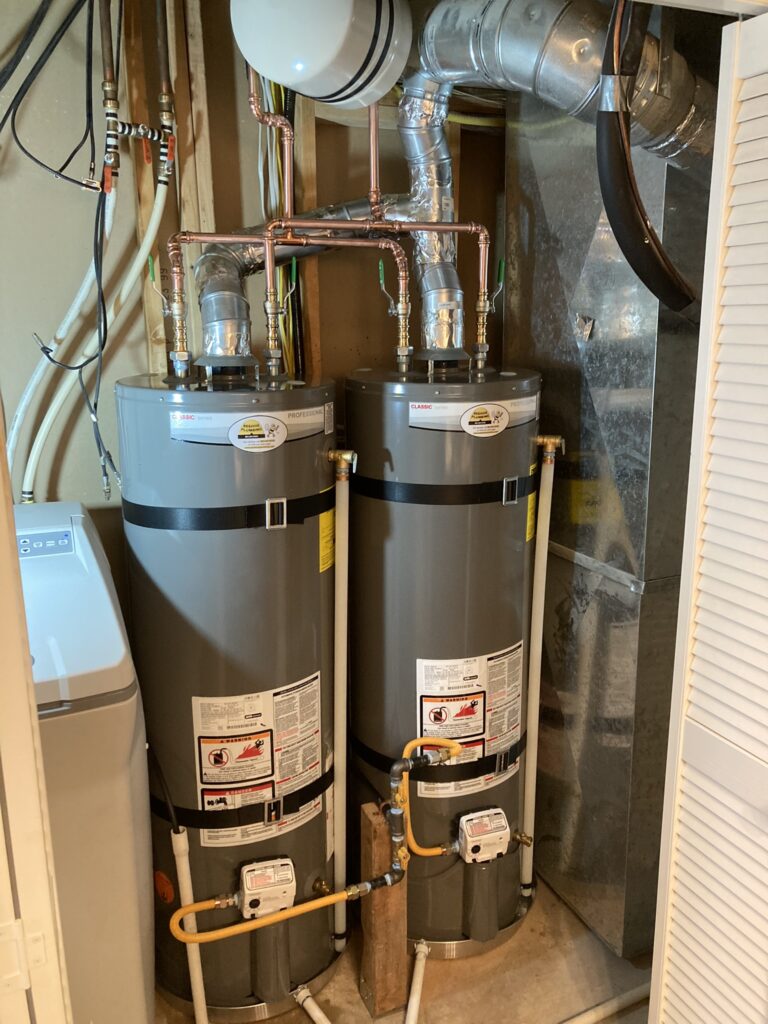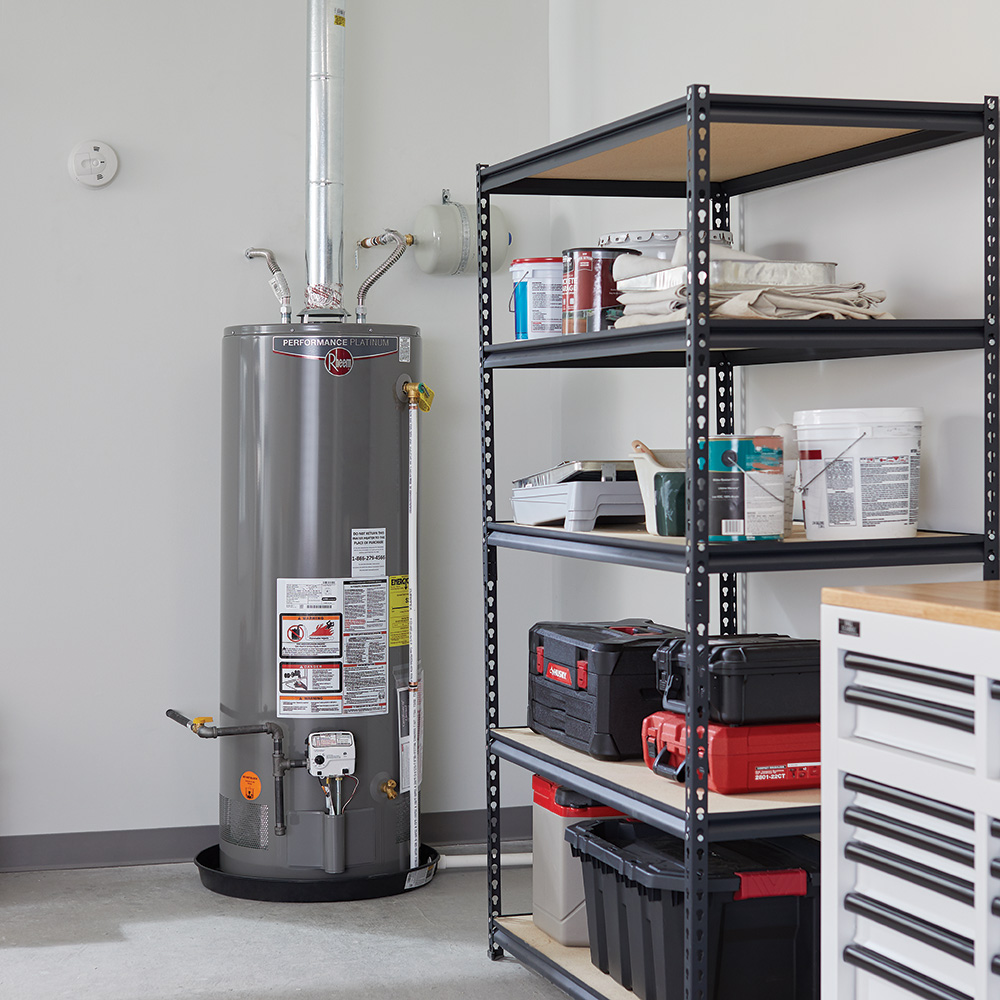Comprehensive Drain Cleaning Services to Ensure Healthy Plumbing
Comprehensive Drain Cleaning Services to Ensure Healthy Plumbing
Blog Article
Full Guide to Water Heating SystemInstallation and Replacement
Recognizing the complexities of water heating unit setup and replacement is important for house owners seeking to guarantee effectiveness and dependability in their hot water supply. From selecting the appropriate type and size to carrying out a smooth installation procedure, several aspects need to be considered to prevent typical mistakes.
Sorts Of Water Heating Systems
When considering hot water heater installment and substitute, it is crucial to comprehend the various kinds of hot water heater available on the market. One of the most usual kinds include container hot water heater, tankless water heaters, heatpump hot water heater, and solar water heating units.
Storage tank water heaters are conventional systems that save a particular quantity of warm water, making them readily available when required. In comparison, tankless water heaters supply warm water on demand, removing the requirement for storage space.
Heatpump water heating units use electrical power to move warm from the air or ground to heat water, using considerable power financial savings but needing even more space and certain installment problems. Lastly, solar water heating units harness solar power to warmth water, offering an eco-friendly choice with prospective long-lasting price savings, although they typically call for a back-up system for over cast days.
Understanding these options makes certain educated decisions relating to setup and replacement, providing to certain requirements and choices.
Selecting the Right Size
Picking the ideal size for a water heating system is critical to make certain ideal performance and performance. A system that is as well little will battle to satisfy household needs, causing inconsistent warm water schedule and enhanced power usage. Conversely, an extra-large hot water heater can result in unneeded energy waste and greater utility bills.
To determine the appropriate size, consider the home's peak warm water usage. This can be calculated based on the variety of passengers and their typical hot water demands. A family of 4 might require a water heater with an ability of 50 to 80 gallons, depending on the use patterns, such as synchronised showers and washing.
Additionally, analyze the healing price, which determines how promptly a heating system can restore warm water after it has actually been utilized. For tankless designs, concentrate on the circulation price, determined in gallons per min (GPM), to guarantee it satisfies the home's synchronised demand.

Installment Refine Overview

Next, the old unit should be disconnected and gotten rid of, taking care to comply with local codes and laws relating to disposal. Once the old system is out, the new hot water heater can be placed over here in area. This action entails connecting the water lines, making sure that all installations are leak-free and protected.
After developing water connections, it's essential to attach the power supply, whether electrical or gas, following the supplier's instructions carefully. When all connections are made, the system should be loaded with water, and the power can be transformed back on. It's vital to inspect for leakages and ensure the water heating unit is working appropriately prior to completing the installation procedure.
Usual Installation Blunders

Another frequent mistake is disregarding to adhere to neighborhood codes and policies. Falling short to stick to these standards can not only lead to safety dangers however might also result in costly penalties or the demand for costly reinstallation.
Failing to protect links or utilizing the wrong kind of installations can lead to leakages and look at this now water damage. By avoiding these typical installation mistakes, property owners can ensure their water heater runs securely and effectively, making the most of performance and durability.
Upkeep Tips for Longevity
Appropriate upkeep of a hot water heater is necessary for its longevity and optimum efficiency. Regular assessments and maintenance can prevent pricey repair services and expand the device's life expectancy. Begin by inspecting the temperature level setup; it must commonly be established between 120 ° F and 140 ° F for optimal power effectiveness and safety.
Every 6 months, flush the storage tank to get rid of debris buildup, which can harm heating efficiency and create corrosion. To do this, switch off the heating unit, connect a tube to the drain valve, and allow the water run till it is clear.
Anode poles need to be examined annually and replaced when they are rusted. These rods aid prevent storage tank corrosion by bring in harsh components in the water.
Furthermore, inspect the pressure alleviation shutoff frequently to guarantee it is working correctly. This shutoff is vital for protecting against too much pressure buildup within the container.
Finally, take into consideration setting up a professional maintenance check every couple of years for extensive inspections and maintenance. By adhering to these maintenance tips, house owners can considerably enhance the effectiveness, safety, and life expectancy of their hot water heater, making certain trustworthy hot water for years to come.
Verdict
Finally, correct setup and maintenance of water heating units are important for guaranteeing effectiveness and long life (pipe repair). Selecting the appropriate kind and size, sticking to installment guidelines, and preventing typical errors dramatically add to optimum efficiency. Routine upkeep checks and professional servicing aid sustain performance and avoid costly repairs. By recognizing these vital aspects, house owners can accomplish a reliable hot water supply while minimizing prospective problems related to water heating unit procedure.
Comprehending the ins and outs of water heating system setup and substitute is vital for property owners looking for to ensure effectiveness and dependability in their warm water supply.Container water heaters are conventional systems that keep a particular volume of warm water, making them easily available when required. In contrast, tankless water heaters have a peek at this site give warm water on need, eliminating the demand for storage space. Choosing a water heating system that is either also tiny or as well huge can lead to inadequacies, resulting in inadequate hot water supply or extreme energy intake.
By comprehending these crucial elements, home owners can achieve a trustworthy hot water supply while reducing prospective issues related to water heating system operation. drain cleaning.
Report this page